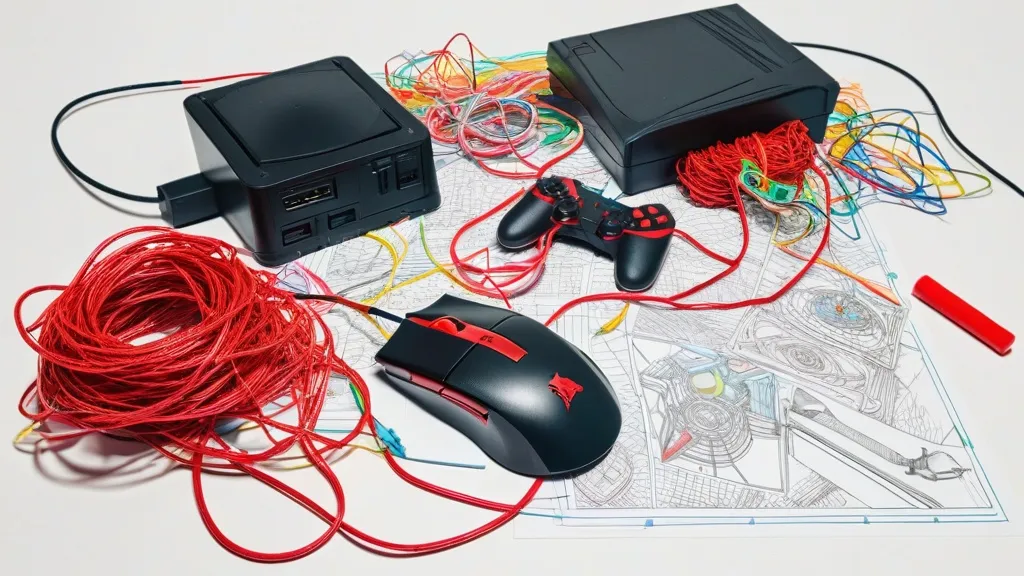I’ve spent the last decade trying to review games without getting buried under scores, hype, or angry comments. Yes, I still love doing it. And yes, I roll my eyes a lot. When I say I review games, I mean I play, I test, I replay, I take notes, I argue with myself. Ratings. Critique. User scores. Bugs. DLC. Microtransactions. All that messy stuff lives in my head rent-free. So let’s talk about how I actually think about this work, in simple words, without the fluff.
Why I Even Do This

I started because I was that kid who wrote fake magazines at the kitchen table. I stapled printer paper and drew “screenshots” with markers. No one asked for it. I still kept going. Now I’ve got codes, embargoes, and a calendar that looks like a crime board with red string.
What I think is simple: a good review tells you three things. What the game is trying to be, what it actually is, and whether it respects your time and money. That’s it. All the rest—pretty words, catchy headlines, fancy scoring systems—is garnish.
My Basic Review Setup
In my experience, reviewing isn’t just playing. It’s testing. I try different difficulty settings. I push the settings menu to the edge. I mix controller and mouse. I stress the save system. I watch the framerate during explosions. I talk to NPCs twice. I try to break the quest. I also let myself just… play. Because fun matters, even if “fun” sounds childish in a “critical analysis” sentence.
The Messy Truth About Scores
Scores are shortcuts. Sometimes useful, mostly dangerous. I’ve always found that a number drags the conversation into drama. Especially when it hits an aggregate site and people see a green or a yellow and start yelling in all caps. If you only care about the score, you’ll miss the little stuff: a clunky camera that ruins boss fights, a save bug that eats your progress, a sound mix that hides footsteps in a stealth game.
The Industry Stuff I Wish Everyone Knew
Game PR sends codes under embargo. Some games drop “review updates” on Day 1 with a patch that changes key systems. Live service games evolve every week. Early access is basically paid beta with hope. None of this is bad on its own. But it makes reviews slippery. You read my piece on Monday; the game is different by Friday.
How I Handle Time Pressure
I decide three things. Play enough to see the full loop, test the stuff you’ll actually do most, and be honest about what I haven’t seen. If the endgame is a different beast, I say it. If I’ve only played 20 hours of something that begs for 60, I mark that clearly.
A Working Rule I Live By
Tell you what your first weekend with the game will feel like. Not the press release version. The actual, controller-in-hand version.
If you want a quick place to binge lots of takes across different genres, I still point friends to a simple feed of game reviews. Browsing helps you see patterns—what reviewers nitpick, what they forgive, and what red flags show up again and again.
Short Reviews vs Long Reviews
Some folks want the ultra-compact format: five paragraphs, a score, and a clean verdict. That’s fine. I do it sometimes. But long-form is where I can chew on things—mission structure, how a tutorial lies to you, whether the economy punishes casual players, or how a story twists the genre. Long reviews also reveal bias quicker, which is a good thing. You should see where I’m coming from.
When I go deep, I try not to drown you in text. I use subheads, lists, and even silly metaphors if they make a point faster. If you like that deep-dive angle, I wrote about why some games deserve a slow, patient look here: the intrigue of long game reviews. I get nerdy. In a friendly way.
On “Lazy” Reviews (And Why Simplicity Sometimes Wins)
Lazy gets thrown around like confetti. But here’s my take: clear and simple is not lazy. Simple can be honest. If a game is a snack, I’ll say it’s a snack. If you want examples of how minimalism in critique can still hit hard, I’ve praised it before in a piece about embracing simplicity in gaming critiques. Not every game needs a thesis paper. Some need a thumbs up, a warning about a stutter, and a note about the camera being allergic to walls.
My Review Flow, Step by Step
- Boot the game. Check first-time user experience. Accessibility options, text size, colorblind modes.
- Test performance. 30 minutes of chaos. Explosions. Crowded hubs. Weather. If it breaks, I note when and how.
- Play the main loop. Do the thing you’ll do most. If the loop is boring, nothing else will save it.
- Try side content. Are side quests chores or actually stories?
- Touch endgame or rank play, if relevant. Not always possible before launch. I mark it.
- Check monetization. Battle pass? Cosmetic shop? Pay-to-skip? Hidden timers?
- Look at patch notes. Compare pre-release and Day 1 builds if I can.
A Quick Case: Indy, Whips, and Puzzles
When someone asks me why classic adventure design still works, I point them to an example I liked: this Indiana Jones game review. It breaks down how puzzles teach you without a lecture and how tool-based traversal creates flow. It’s not flashy tech. It’s smart design. Which, yes, still rules.
How Journalism Shapes the Space
If you want context on how the whole press ecosystem works, I often refer folks to a plain overview of video game journalism. Not because it’s perfect, but because it shows how preview cycles, ad money, and traffic all nudge coverage. Knowing that helps you read reviews with sharper eyes.
Aggregators, For Better or Worse
People love a single score. I get why. Time is limited. But if you live and die by averages, you’ll miss the why. That said, I still check Metacritic after I’ve written my draft, mostly to see how far off I am from the crowd. Sometimes I cheer. Sometimes I stare at the ceiling and reconsider my life choices. It’s a tool, not a judge.
What I Think About Length, Honesty, and Bias
My bias? I like systems that teach by play, not pop-ups. I hate when a game gives me ten currencies and a shop with weekly FOMO. I get weak for good haptics and crunchy sound design. I’m not a graphics chaser, but I do notice texture streaming that loads in like melted ice cream.
I also remember who the game is for. A cozy farming sim doesn’t need Soulsborne combat. A racing sim doesn’t need a visual novel wedged into the garage. The review should meet the game on its terms, not bully it into being something else.
When I Revisit a Review
Live games change. If the devs fix core problems, I’ll update my thoughts. If microtransactions creep in later, I bring that up. If a beloved indie adds a game mode that turns it from snack to meal, I tell you to come back for seconds.
Red Flags I Watch For
- Performance tanks in big hubs or cutscenes with heavy effects.
- Story quest markers that break on reload.
- Checkpoint timings that waste your time after a death.
- Economy tuned so that grind wins over skill.
- UI that refuses to tell you key stats or hides important toggles.
- Camera that turns boss fights into guesswork.
Green Flags Worth Celebrating
- Smart tutorials that shut up once you’ve learned.
- Skills or perks that change how you play, not just numbers.
- Side content that respects your time and gives unique rewards.
- Bosses that teach, then test, then reward.
- Accessibility options that go beyond lip service.
How I Use Early Access and Patches in Reviews
Early access complicates everything. I treat it like a restaurant soft open: honest menu, smaller portions, and a promise to improve. I’ll write impressions and hold the final stamp until 1.0. If a patch fixes core issues, I’m happy to say, hey, it’s better now. No pride swallowed. Just truth updated.
What I Tell Friends Who Only Have Weekends
Here’s my weekend test: can you get something satisfying in 2–3 hours? Not “you’ll like it after the 15-hour tutorial” nonsense. If the answer is no, I warn you. Even great games can be bad weekend picks.
Styles of Reviews I Write (Table Time)
I’m not fancy, but I do love a table. Makes choices easy.
| Style | Best For | Time to Write | What You Get | Risk |
|---|---|---|---|---|
| Quick Hit | Busy readers, simple games | 1–2 days | Core loop, performance, verdict | Misses depth |
| Deep Dive | Complex RPGs, systems-heavy games | 5–10 days | Design analysis, economy, story arcs | Too long for some |
| Ongoing Review | Live service, seasonal games | Weeks to months | Updates tracked, meta shifts | Never “finished” |
| Hardware-Focused | PC builds, next-gen consoles | 3–5 days | Settings, FPS graphs, bugs | Can ignore story |
| Accessibility First | Players with specific needs | 3–6 days | Options depth, usability | Less focus on meta |
A Quick Note on Casinos, Arcades, and Label Confusion
Every few months I get asked to review something that’s not quite a traditional game. Like historical horse racing machines (HHR) that look like slots but aren’t exactly. If you’ve wondered about that scene, this Rose Gaming Resort review on HHR machines gives a clean breakdown. Different beast. Different rules. Very different expectations.
How I Compare My Take to the Crowd
After I’ve shipped my draft, I glance at the averages, peek at user reviews, and skim a few trusted writers. I’m not “correcting” myself. I’m checking my blind spots. Did I miss a crash everyone else hit? Did I praise a system that speedrunners are already breaking in half? If I’m an outlier, I explain why. Outliers can be right.
When “Fairness” Gets Weird
Is it fair to review a game pre-patch? Sometimes. Sometimes not. If the day-one patch fixes a bug I called out, I update my text. If it doesn’t, I leave it. I’m not grading intent. I’m grading what you play. I also watch for monetization that sneaks in after the early honeymoon. If a game adds “booster” packs later, I’ll say so. Loudly.
Personal Pain Points (AKA My Reviewer Kryptonite)

- Motion blur you can’t turn off. Why.
- Unskippable intro cutscenes on your tenth run.
- Checkpoints before 90-second expo dumps, then a boss one-shots you.
- Buttons that do five actions depending on context. Pick a lane.
- UI pop-ups that hijack your inputs mid-combat.
Things That Win Me Over Fast
- Photo mode that doesn’t pause the action by default.
- Sound sliders for dialogue, effects, music, and stream-safe mode.
- Readable fonts without mods.
- Cross-save that actually works between platforms.
- Tutorials you can replay, not just skip.
How I Write, Practically
I play with a notebook nearby. I write down moments where the game surprised me, or where I laughed, or where I sighed so hard my cat left the room. I mark down errors and repeat them to confirm. I keep clips. I batch screenshots. I draft the review in chunks: loop, performance, story, systems, money stuff, verdict.
On Being Wrong (It Happens)
Sometimes I get it wrong. I praised a game’s balance that fell apart a week later. I missed a bug that only appeared on a mid-tier GPU. I’ve learned to say, yep, I missed that. And fix it. Readers respect that way more than doubling down.
Spotlight: One More Long-Dive Example
I still like the longer-form approach when a game has more under the hood than it shows on the surface. If that sounds like your thing, you might enjoy the angle I took in this piece about why some games need long reviews. Sometimes the story beats don’t land until Act 3. Sometimes the economy only shows its teeth at hour 25.
On Niche vs Mainstream
I don’t punish a niche game for being niche. A crunchy tactics indie doesn’t need mainstream polish if the math sings. A blockbuster open-world can’t hide behind “vibes” if the quests repeat like a broken playlist. Grade ambition against delivery, not marketing budget.
The “One Weekend” Table for Friends
If you only have a few hours, here’s how I think about your time. Very plain. Very honest.
| Game Type | Good Weekend Pick? | Why | Watch Out For |
|---|---|---|---|
| Short Indie Platformer | Yes | Fast loops, tight levels | Difficulty spikes |
| Live Service Shooter | Maybe | Fast fun, friends online | Battle pass FOMO |
| JRPG | Not Great | Long ramp-up | Tutorial hell, unskippable scenes |
| Rogue-lite | Yes | Runs fit short sessions | RNG mood swings |
| Story Walking Sim | Yes | 2–4 hours, complete arc | No replay value |
Fun Aside: Long Reviews Can Be Cozy
I know, I know. Not everyone wants a novel about a video game. But sometimes that deep-dive tone feels like a campfire chat. That’s why I’ve argued for giving long-form more space, like I did in my write-up on long game reviews and their charm. Nice to slow down and think.
Where I Send Curious Readers
If you want periodic mixes of fast and slow coverage, I keep a small feed of my favorites live. It’s mostly my own stuff, plus a few friends’ pieces I admire. You can browse a stream here: the game reviews category. Use it like a tasting flight. Try, spit, try again.
Little Field Note About Franchise Comfort Food
Sometimes comfort beats novelty. I still think puzzle-first action adventure, the kind that lets you crack a temple door with a smirk, has a place in 2025. That mood is captured well in this Indy-focused review about puzzles and whip play. Nostalgia isn’t a sin if the design holds up.
Reader Tips So You Don’t Hate Me Later
- Skim for your deal-breakers: camera, performance, monetization.
- Check if I note platform differences. PC and console aren’t twins.
- If you love a genre I don’t, subtract or add points mentally. It’s fine.
- Remember patches exist. If I say “wait a month,” it’s not a dodge.
- If I call a game “a snack,” don’t expect a meal. It’s a snack.
Weird But Useful: Simplicity Can Be a Feature
I’ve praised so-called “lazy” styles when they’re transparent and clean. If you want an example of that mindset spelled out, here’s my ode to simplicity in reviews. The trick is not to be vague. Simple still needs to be specific.
On the Dark Side: Hype, Backlash, and Noise
Launch day is chaos. Hype builds. A bug shows up. People argue over a decimal point. Some fans take a low score as a threat to their identity. It’s silly, but real. I try to keep my voice steady. No pile-ons. No dunking for clicks. Just play, test, write, repeat.
Sometimes I Write About Weird Venues Too
Games don’t only live on your couch. I’ve toured spaces that blend arcade vibes with quasi-casino tech. The lines blur. If you’re curious, this review of an HHR venue in Virginia is a neat rabbit hole. Again—not slots. Similar coats, different bones.
And When I Actually Say “Buy/Wait/Skip”
I keep it blunt. Buy if the loop sings and the tech holds. Wait if the loop sings but the tech coughs. Skip if the loop fails. That’s the core. Everything else is color.
Do I Ever Change My Mind?
Yep. Patches save games. Or they break them. DLC can fix a story arc. Or add a shop. If the ground shifts, I’ll move my feet. Pride is boring. Accuracy is better.
If You Want One More Deep Nerd Rabbit Hole
I’ve written about why patience and curiosity make long reads worth it when the game itself hides layers. That angle is laid out in my piece on unlocking long-form reviews. It’s my comfort zone. But I still do quick hits when it fits.
Final Nerd Note Before I Get Coffee
When I say I review games, I don’t mean I carry tablets from a mountain. I play like you. I get stuck. I mash the wrong button. I get mad at boss cams. Then I sit down, breathe, and tell you the truth as best I can. No sermons. Just signal through the noise.
Oh, and if you like peeking into how different writers shape their voice over time, I keep a rotating feed so you can see the trend lines in one place: a simple game reviews stream. Helps to see both the trees and the forest.
Last aside before I shut up for today: long form gets love in this piece on the mystery and mood of long reviews. Some games earn the slow burn.
FAQs
- How many hours do you play before you write? — Enough to see the core loop, plus extra to test performance and systems. For big RPGs, that can be 30–50 hours. For smaller games, 6–12 often does it.
- Do you finish every game you review? — No. If the endgame is key, I try. If the core loop is clear early, I focus there. I always say what I finished and what I didn’t.
- Why don’t you always use scores? — Scores start fights and hide nuance. I’ll use them when a site needs them, but I prefer clear “buy/wait/skip” language.
- Do you check other reviewers before posting? — I draft first. Then I skim others for blind spots. I don’t rewrite based on the crowd; I just verify issues I may have missed.
- What’s one instant deal-breaker for you? — Predatory monetization that undercuts the design. If real money shortcuts warp the balance, I’m out.

I’m Darius Lukas. On my blog, I break down what makes games tick with honest reviews, deep analyses, and guides to help you conquer your next virtual challenge.




How do you balance thoroughness with timeliness when reviewing games with evolving content and updates?